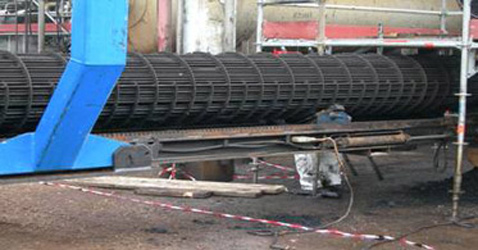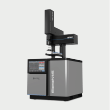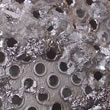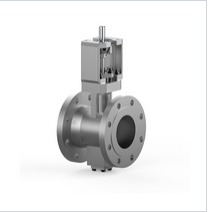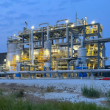Question
-
For a crude tank with a capacity of 610,000 bbl capacity, what mechanised cleaning system would be required and how long would it take to clean the tank especially of sludge. This is a refinery cum petrochemical complex project to be undertaken and we are in the process of optimised tank sizing.
May-2021
Answers
-
Ramon uzcategui, Refidomsa, ramon.uzcategui@refidomsa.com.do
Our experience in cleaning both crude oil tanks and tanks that store asphalt has been the use of ICCO from the FCC; it is used by volume of ICCO as up to 20% of the tank capacity; then the combined ICCO plus the residue is aligned to the slop tank; the operation is repeated up to three times. This has made it possible to deliver maintenance below the expected times and with a high quality of cleaning. And finally, once the tank is opened, a biodegradable degreaser is used manually.
Original Answer
Nuestra experiencia en limpieza de tanques tanto de crudo como de tanques que almacenan asfaltos ha sido el us de ICCO proveniente del FCC; se usa en volumen de ICCO como hasta el 20% de la capacidad del tanque; luego el combinado de ICCO mas el residuo se alinea a tanque de slop; se repite la operacion hasta tres veces. esto ha permitido entregar a mantenumiento por debajo de los tiempos esperados y con gran calidad de limpieza . Y finalmente se usa manualmente una vez abierto el tanque un desengrasante biodegradable.Aug-2021
-
Christopher Hastings, Philadelphia Mixing Solutions Ltd, chastings@philamixers.com
We have 'maintained' a deposition free tank bottom in all manner of crude oil tankage with side-entry tank mixers, the key is to use an effective side-entry tank mixer(s) and they are NOT ALL EQUAL! Depending upon the available recirculation means, i.e. side-mount mixers, recirculation pumps, etc; it may be necessary to use a tank bottom cleaners, the best out on the market is a product from Hydrocarbon Solutions Inc,. It has been proven to reliquify even dehydrated tank bottoms. As long as there is a re-circulation method the chemical is added to the tank, and allowed to soak the deposition, additional crude oil is added and re-circulation takes place. Once that phase is completed the tank is filled and the whole volume is circulated thus blending down the un-bonded tank bottoms into merchantable, processable oil. This product works on soft pan and hard pan.
Jun-2021
-
Daniel Carlson, D Carlson Consulting, dcarlsonconsult@gmail.com
As always with Refining, the devil is in the details. Tank cleaning can range from straightforward with sludge removed in a few weeks, to months and up to a year.
The key questions are (1) how long has the tank been in service, (2) how well were the solids and water layer managed and (3) was the tank used for incompatible crudes which could lead to asphaltine formation and deposition. Most refineries now process a wide range of crudes to minimize raw material cost while optimizing yield against equipment and environmental constraints.
This can, however, lead to selecting crudes that are incompatible in tankage which leads to challenging solids in the crude tank and desalter operating challenges. The economics, however, will usually favour crude selection and additional deslater chemistry, as the crude tank cleaning issues are realized only every 10 to 20 years during the API 653 inspection and are generally not included in the crude evaluation economics. Even with incompatible crudes, the impact on cleaning can be reduced with good water layer management and use of tank farm chemical addition to help manage which phase the solids migrate to - oil or water - and also stabilizers to minimize asphaltine precipitation. These chemicals can seem expensive in the prompt and will be part of refinery OpEx, but can reap huge rewards in tank cleanliness as well as desalter performance.
Jun-2021
-
Ruben Hidalgo, DIANAVALEN, C.A., hidalgor68@gmail.com
I recommend recirculating a volume of water equivalent to the sediment settling, from the industrial water plant. Operate in the tank; recirculate with high flow pumps until homogenizing intermittently while pumping a volume to a modular plant with DAF (there are plants on the market with moderate capacities and all the plant requirements, chemicals), the separated hydrocarbons send them to the APIs of the system treatment of industrial water and the water to the lung tank that feeds the industrial water plant, repeat until the tank is completely cleaned. In 2 to 4 months 24/7 a week, it definitely depends on the capacity of the modular plant.
Original Answer
Recomiendo recircular un volumen de agua equivalente al asiento de borras, de la planta de aguas industriales. Operar en el tanque; recircular con bombas de alto caudal hasta homogenizar de manera intermitente mientras bombeas un volumen a una planta modular con DAF (hay plantas en el mercado con capacidades moderadas y todos los requerimiento de la planta, quÃmicos), los hidrocarburos separados enviarlos a los API del sistema de tratmientos de aguas industriales y las aguas al tanque pulmon que alimenta la planta de aguas industriales, repetir hasta limpieza total del tanque. En 2 a 4 meses 24/7 a la semana, definitivamente depende de la capacidad de la planta modular.Jun-2021
-
MARCELLO FERRARA, ITW S.R.L., mferrara@itwtechnologies.com
Any mechanical cleaning system normally requires a long time for cleaning. For a 610,000 bbl crude tank it is not uncommon to take 6-12 months. On top of this, waste disposal costs have to be accounted for. ITW has developed a no man entry technology which reduces the cleaning time to a few days, while effectively recovering the hydrocarbons from the sludge.
May-2021








